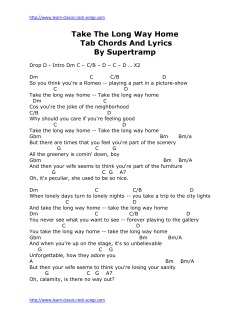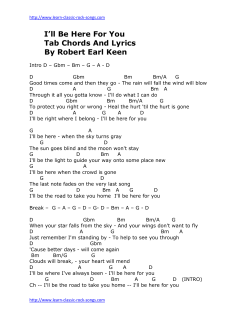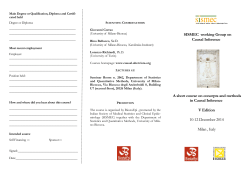
Outline - Boise State University
Modern Methods to Estimate Propensity Score Weights Dan McCaffrey & Matt Cefalu The estimation of causal effects is the goal of many research studies. For example, analysts might want to understand whether a new treatment or intervention leads to better outcomes for patients or whether receipt of certain health service improves long term health. Controlled experiments are held as the gold standard for estimating causal effects. However, experiments can be infeasible for many reasons forcing analysts to rely on observational data in which treatment assignments are out of the control of the researchers. Over the last 30 years, statisticians have developed new models for defining causal effects and new methods for estimating them from observational data that complement traditional approaches that are still commonly used in many applications such as linear and logistic regression. Recently RAND statisticians and their colleagues have developed tools to implement these new causal effect estimation methods. This short course will provide an introduction to causal modeling using the potential outcomes frame work and use of propensity score weights in the estimation of causal effects from observational data. The course will also provide step-by-step guidelines on how to estimate and perform diagnostic checks of propensity score weights for evaluations examining the relative effectiveness of two or more interventions and the cumulative effects of time-varying interventions. Attendees will gain hands on experience estimating propensity score weights for these different settings, evaluating the quality of those weights, and utilize the weights for estimating intervention effects. At the end of the course, participants should be familiar with how propensity score weights can be utilized to estimate intervention effects and how to evaluate balance before and after propensity score weighting in their own studies. The course will provide demonstrations of available software in R and SAS for fitting the models and opportunities for conducting analyses. The primary goals of the course are for attendees to have an understanding of how to implement propensity score weighting using state-of-art-methods and insights into some of the practical issues that evaluating the quality of propensity score weights involve. Course Outline 8:30 – 9:30 Introduction to potential outcomes framework for causal modeling and the role of the propensity score in causal effect estimation 9:30 - 9:45 Break 9:45 – 10:30 Inverse probability of treatment weighting and causal effect estimators 10:30 – 12:00 Propensity score estimation via logistic regression and GBM a. What is GBM and how does it compare with logistic regression b. The role of balance in propensity score estimation c. Metrics for assessing balance 12:00 – 12:30 Lunch 12:30 – 1:30 Propensity score weighting example with two treatment conditions a. Use the TWANG package to fit a GBM model b. Use of TWANG is R, SAS, and Stata c. Use of TWANG to assess balance d. Estimation of treatment effects using estimated weights 1:30 – 2:00 Alternatives to GBM and logistic regression for propensity score estimation (CBPS or MDIA) 2:00 – 2:45 Causal effects with 3+ treatments, definitions and estimators 2:45-3:00 Break 3:00 – 4:30 Propensity score weighting example with four treatment conditions a. Use the TWANG package to fit a GBM model b. Use of TWANG is R, SAS, and Stata c. Use of TWANG to assess balance d. Estimation of treatment effects using estimated weights 4:30-5:00 Final topics a. Marginal structural models & inverse probability of treatment weighting b. Longitudinal analyses -- GLS vs. Independence
© Copyright 2025













